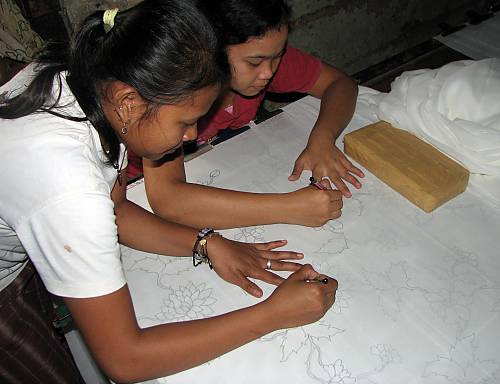Education and training in Indonesian Batik intangible cultural heritage for elementary, junior, senior, vocational school and polytechnic students, in collaboration with the Batik Museum in Pekalongan
Selected in 2009 on the Register of Good Safeguarding Practices
Indonesian Batik is a traditional hand-crafted dye-resist textile rich in intangible cultural values, passed down for generations in Java and elsewhere since the early nineteenth century. The batik community noted the younger generation’s interest in batik was waning, and felt the need to increase efforts to transmit batik cultural heritage to guarantee its safeguarding. The main objective of the programme is therefore to increase the awareness and appreciation of the cultural heritage of Indonesian batik, including its history, cultural values and traditional skills, among the younger generation. Law No. 20 of 2003 makes it possible to include batik culture in curricula as ‘local content’ in areas having batik cultural heritage, such as Pekalongan City. The Batik Museum initiated the programme in 2005, in close cooperation with the educational authorities of the city, and it continues to expand to Pekalongan District and neighbouring Batang, Pemalang and Tegal districts. This programme, whose effectiveness has been demonstrated through evaluations, constitutes an effort to (a) safeguard intangible cultural heritage by ensuring its transmission to the next generation, (b) ensure respect for the intangible cultural heritage by giving Indonesian Batik a respectable place as local content within the curricula of various strata of formal education, beginning from elementary, junior, senior and vocational schools up to polytechnic, and (c) raise awareness of the importance of intangible cultural heritage at the local, national and hopefully international level.



